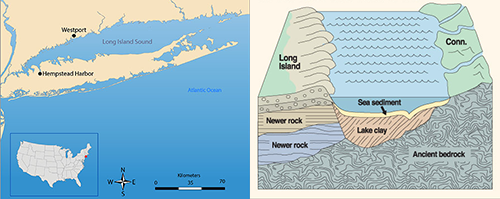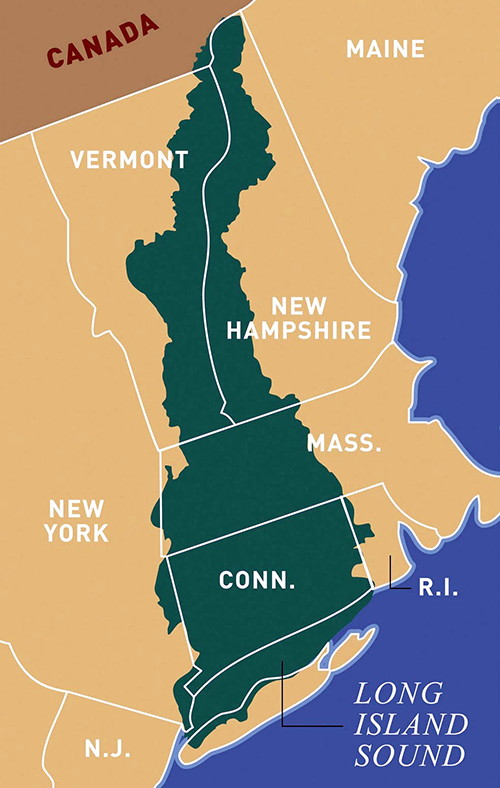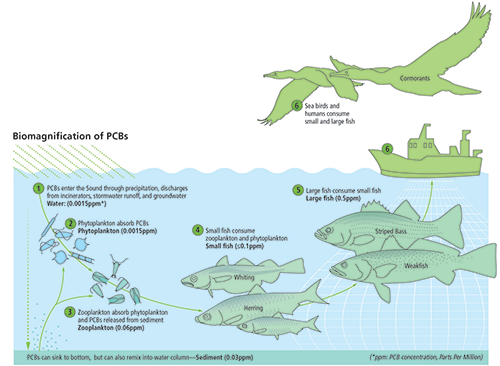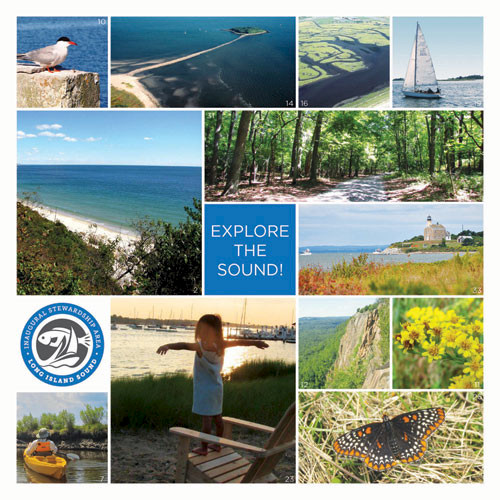Long Island Sound: Environmental Literacy
Bill Dennison ·'Environmental literacy' series
The seven environmental literacy principles for Long Island Sound are the following:
- Long Island Sound is an estuary formed from a terminal glacial moraine (Long Island), flushed through tidal action from Block Island Sound, with minor exchange with NY Harbor.
- Long Island Sound once supported abundant oysters, scallops, birds and lobsters with widespread salt marshes and seagrasses.
- The Long Island Sound watershed is large, extending north to Canada and western portions are highly developed, supporting 8 million people, including portions of New York City.
- Long Island Sound supports commerce, transportation and national defense and is heavily utilized by recreational boaters and fishers.
- Long Island Sound is affected by nutrients (chronic hypoxia), sediments (dredge disposal), and toxicants, particularly heavy metals (e.g., mercury) and organic compounds (e.g., PCBs).
- The Connecticut 'working shoreline' supports diverse uses and the New York coast is largely residential.
- Long Island Sound has multiple active local watershed groups and restoration is managed through the Long Island Sound Study.
1. Long Island Sound is an estuary formed from a terminal glacial moraine (Long Island), flushed through tidal action from Block Island Sound, with minor exchange with NY Harbor.
Long Island Sound has variable salinity, ranging between 23-32 ppt. A terminal glacial moraine was formed from a continental ice sheet that scraped New England sediments into what is now Long Island. Exchange between Long Island Sound with Block Island Sound is through the eastern end of the Sound through the Race. The western end of Long Island Sound has a connection to the Hudson River through the East River, but little water exchange occurs through this narrow opening. The tidal range in the Sound gets accentuated in a western direction, ranging from less than a meter to over 2 meters. The average depth is 20 meters, with a maximum depth of over 100 meters.

2. Long Island Sound once supported abundant oysters, scallops, birds and lobsters with widespread salt marshes and seagrasses.
There were abundant oysters in shallow waters of western Long Island Sound, supporting an active commercial fishery. These oysters are largely gone now. Bay scallops were also abundant, growing on the seagrass meadows that grew in the various harbors of Long Island Sound. Migratory and wading birds were and are still abundant in and adjacent to Long Island Sound. There was a vibrant lobster fishery until recently which has declined due to disease outbreaks leading to fisheries closures. Once abundant salt marshes have been reduced due to coastal development and once abundant seagrass meadows have been reduced due to water quality degradation.

3. The Long Island Sound watershed is large, extending north to Canada and western portions are highly developed, supporting 8 million people, including portions of New York City.
The watershed of Long Island Sound is dominated by the Connecticut River watershed which extends north through Connecticut, Massachusetts, Vermont and New Hampshire up as far as Canada. The Housatonic and Thames River are the next largest watersheds. New York City and its suburbs in the western portion of the watershed are densely populated and account for the majority of the 8 million people that live in the watershed.

4. Long Island Sound supports commerce, transportation and national defense and is heavily utilized by recreational boaters and fishers.
Long Island Sound has long been used for shipping and the Connecticut ports along the Sound were used to export various manufacturing products. Manufacturing has been reduced, but the ports are still used to import materials. The Sound is still an active transportation corridor for a series of ferries between Long Island and Connecticut. There is a large submarine manufacturing facility in Groton, Connecticut. Long Island Sound is a popular destination for recreational boaters and fishers.

5. Long Island Sound is affected by nutrients (chronic hypoxia), sediments (dredge disposal), and toxicants, particularly heavy metals (e.g., mercury) and organic compounds (e.g., PCBs).
Long Island Sound is under a regulatory Total Maximum Daily Load decree to decrease nutrient loads since 2001. Declines in atmospheric nitrogen and point source nutrient discharge have occurred, but increases in non-point source runoff have resulted in a lack of improvement in the size and intensity of hypoxia in bottom waters of western Long Island Sound. Disposal of dredged sediments continues to be an issue and legacy heavy metals like mercury contaminate sediments and biota. The abundance of organic compounds appears to be decreasing, but they are very persistent.

6. The Connecticut 'working shoreline' supports diverse uses and the New York coast is largely residential.
Long Island Sound should be called 'Connecticut Sound', given the strong connection that Connecticut has with the Sound. This connection by people in Connecticut with the Sound is promoted by more access, vistas, watershed interactions and the various commercial activities involving the Sound. The Long Island coast is more residential and has more limited public access.

7. Long Island Sound has multiple active local watershed groups and restoration is managed through the Long Island Sound Study.
The Environmental Protection Agency runs the Long Island Sound Study which coordinates various restoration efforts and produces biennial Sound Health assessments. There are various local watershed groups that focus on regional issues of concern with a large number of volunteers.

About the author
Bill Dennison

Dr. Bill Dennison is a Professor of Marine Science and Vice President for Science Application at the University of Maryland Center for Environmental Science.

